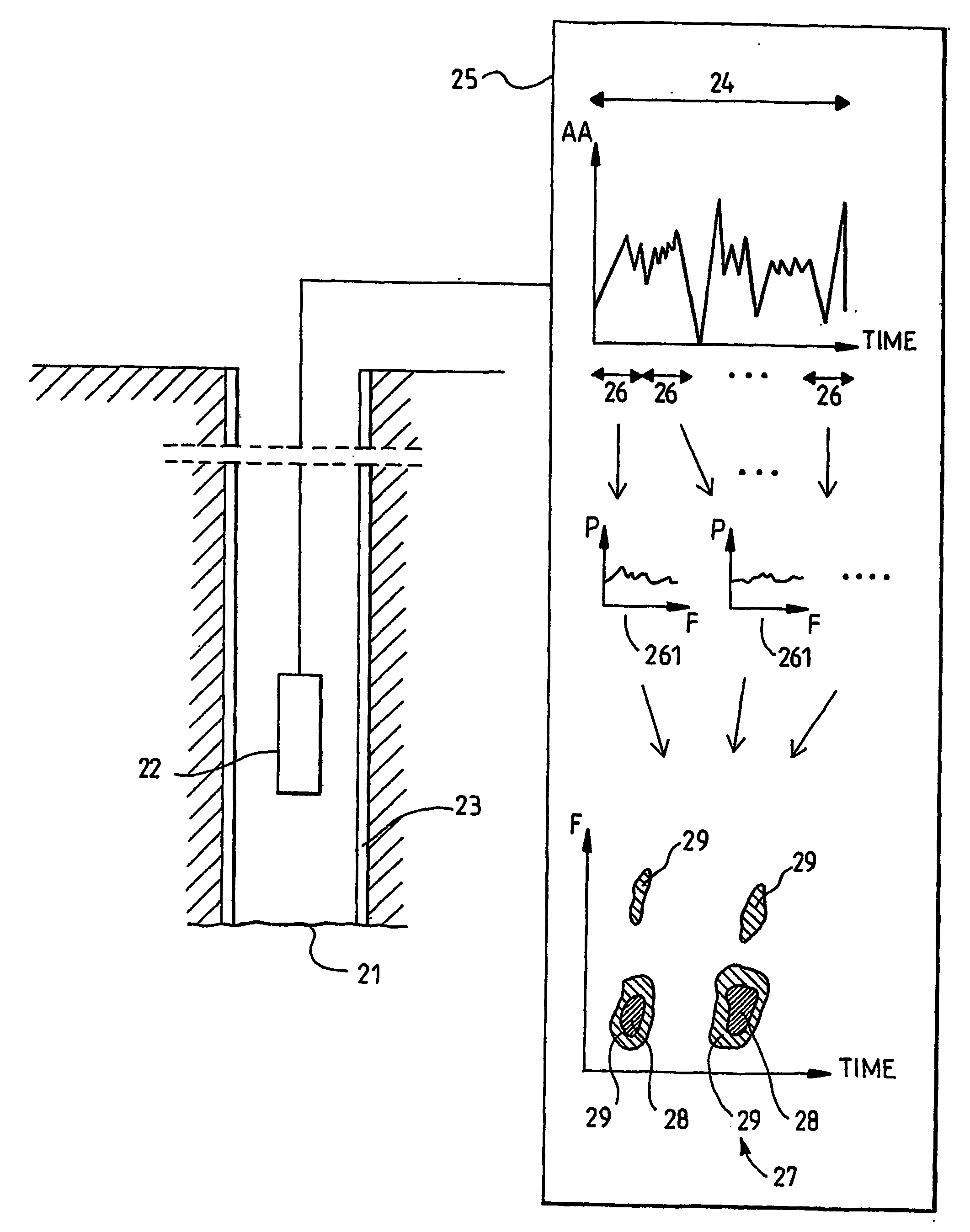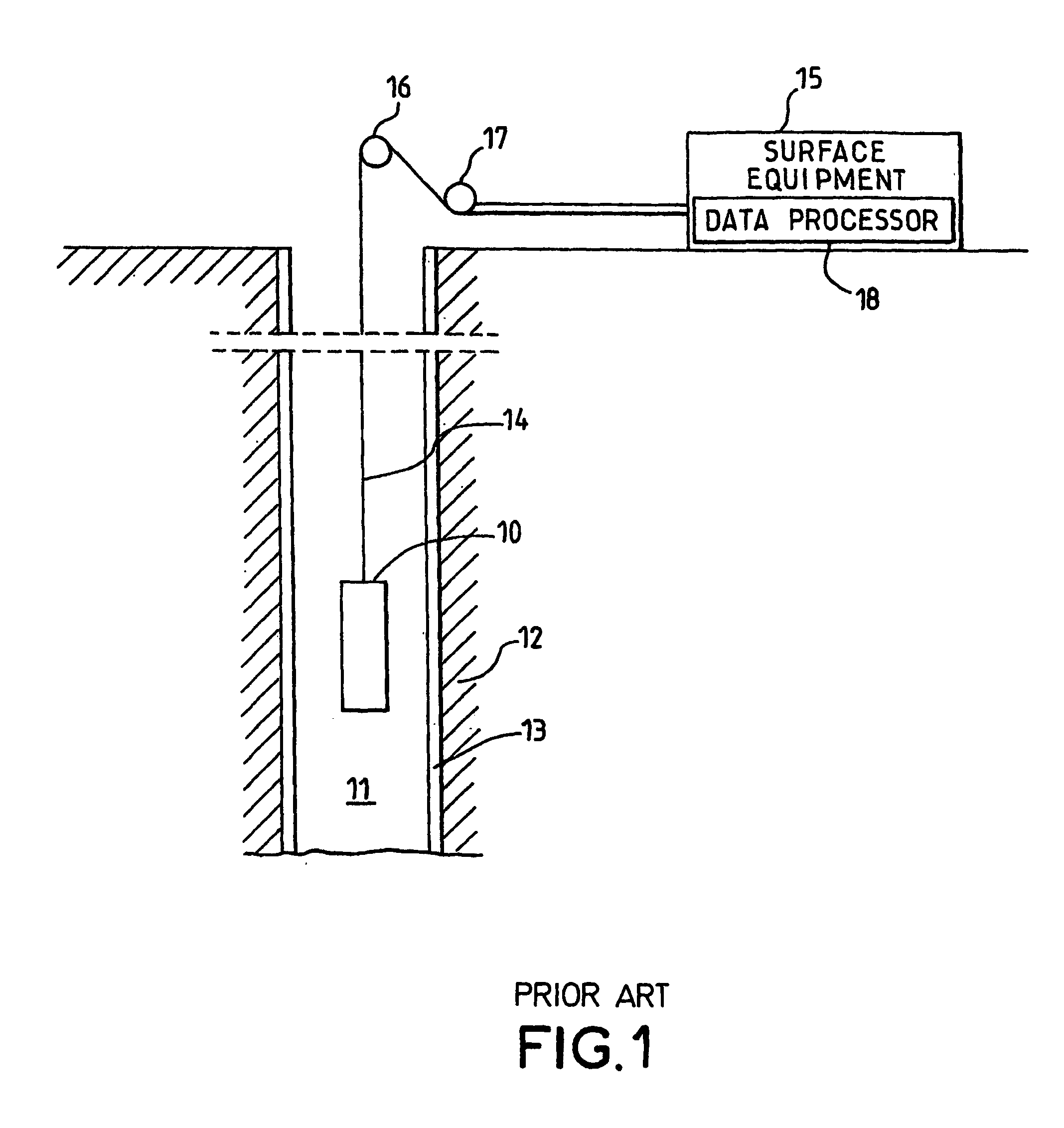Method and apparatus for acoustic detection of a fluid leak behind a casing of a borehole
- Summary
- Abstract
- Description
- Claims
- Application Information
AI Technical Summary
Problems solved by technology
Method used
Image
Examples
Embodiment Construction
[0035] Same references will be used to reference the same elements in the Figures throughout the description.
General Overview
[0036]FIG. 2 provides an illustration of one example embodiment of the present invention. In this embodiment, passive noise recording is performed at a given depth in a borehole 21. A suitable noise detector 22 (hydrophone or geophone for example) is used to record Acoustic Amplitude (AA) for a given period of recording time 24.
[0037] The acoustic amplitude is recorded during one or a plurality of periods of recording time that generally have a duration adapted to be able to capture at least one acoustic event generated by a leak. The duration of the period of recording time 24 may for example have a value in a range from 10 to 30 seconds. The value may be decreased to 5 seconds or less for acoustic events that occur several times per second, and increased to several minutes for acoustic events that occur two or three times per minute. It is important that...
PUM
 Login to View More
Login to View More Abstract
Description
Claims
Application Information
 Login to View More
Login to View More - R&D
- Intellectual Property
- Life Sciences
- Materials
- Tech Scout
- Unparalleled Data Quality
- Higher Quality Content
- 60% Fewer Hallucinations
Browse by: Latest US Patents, China's latest patents, Technical Efficacy Thesaurus, Application Domain, Technology Topic, Popular Technical Reports.
© 2025 PatSnap. All rights reserved.Legal|Privacy policy|Modern Slavery Act Transparency Statement|Sitemap|About US| Contact US: help@patsnap.com



